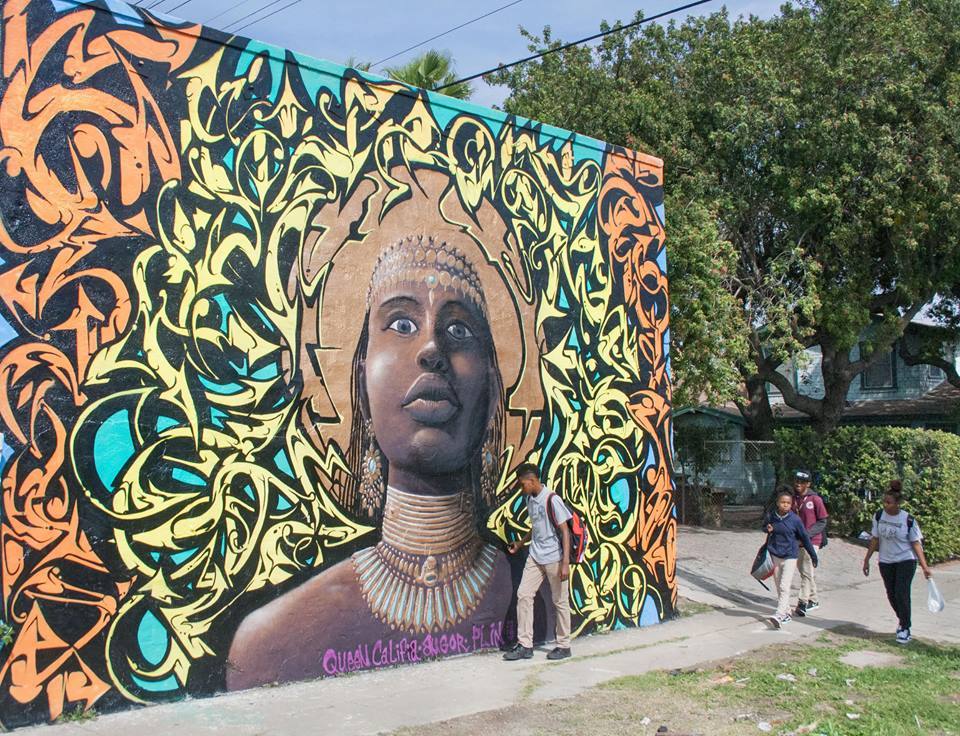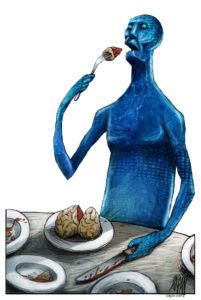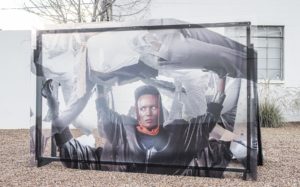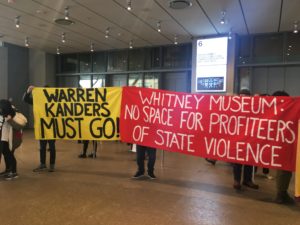Creative Souls
An excerpt from a new book that demonstrates that Los Angeles, surpassing New York and Chicago, is arguably the epicenter for African-American visual art. A mural titled "Queen Califia," by visual artist and muralist AUGOR, in the Leimert Park neighborhood of Los Angeles. (Pamela Firefly / Facebook)
A mural titled "Queen Califia," by visual artist and muralist AUGOR, in the Leimert Park neighborhood of Los Angeles. (Pamela Firefly / Facebook)
The following is an excerpt from “Creative Souls” by Paul Von Blum. Reprinted with permission of publisher The New World African Press.
Southern California has long been recognized as a world arts center. Universally known as the hub of the American film industry, the region has also been fertile ground for thousands of visual artists. These talented women and men have produced exemplary work in every medium, including painting, drawing, sculpture, printmaking, cartoons and comics, photography, and several others. Their cumulative efforts have put the area on the global art map, increasingly making Los Angeles a serious focus of attention among artists, critics, scholars, and collectors.
African American artists have made powerful and enduring contributions to this development for many decades, yet their work still remains less visible than that of their white colleagues and contemporaries of comparable talent and achievement. While many key area black artists have passed on, several remain creatively active in the early 21st century, including some renowned figures in their 60s, 70s, and 80s. Their outstanding visual efforts, especially since the 1960s, have engaged and challenged thousands of people, especially in African American communities throughout the United States. They have stimulated audiences of all backgrounds to reflect critically about major themes of historical and social life. They have created a vibrant and powerful creative community in the Los Angeles area, using their works to call effective attention to issues of vital significance to millions of black people in American and around the world.
Many African American artists in Los Angeles have migrated, often with their families, to Southern California, with high aspirations for personal and professional success. Most fled the restrictions and humiliations of the racially segregated South. Their dreams, not surprisingly, often conflicted with the realities of a dominant white art world that regularly discriminated against artists of color (and women), even in an increasingly multicultural city like Los Angeles. Like other African American migrants, artists encountered a huge gap between American ideals of justice and equality and the extensive racist realities on the ground.
Despite formidable barriers, African American artists in Los Angeles have made significant advances, especially since the modern civil rights era of the 1960s and 1970s as well as the trauma of the Watts Rebellion in 1965. Those violent events in particular played a large role in awakening America to the savagery and persistence of racism. The immediate aftermath of Watts catalyzed substantial governmental and private action; public officials and media figures also began paying much more attention to the legitimate grievances of black citizens. Numerous social programs emerged from the ashes of the massive civil disorder in Los Angeles. Serious public dialogue about race occurred both nationally and locally. Blackness was on the front burner and the dominant institutions in America began to realize, at least rhetorically, that the Watts riots could happen again unless immediate and durable steps were taken to ameliorate the historical injustices directed against the African American population.
These political and discursive developments following the Watts riots profoundly accelerated the development of Los Angeles area African American art, in both increased political consciousness among artists themselves and in the development of alternative institutional arrangements. The cumulative accomplishments of local black artists in this tumultuous time period deserve extensive scholarly attention and much more recognition from art historians and critics.
Since the Watts riots, they have made inroads into some mainstream art institutions and, more important, have created many of their own institutions, forging viable African American-based organizations in order to create and sustain their artistic communities. Those stories are the institutional foundation for the specific visual accomplishments of the many talented black artists in Los Angeles, including those in the present book. The historical struggles and recent and contemporary developments in museums, community centers, and private galleries catering to the African American artistic community are crucial in understanding how this vibrant visual tradition has been shaped in the post-war era.
[M]ainstream and African American cultural institutions have incubated and sustained a powerful visual arts tradition in the Los Angeles area. Some LA area African American artists in have gained widespread national and international recognition. Most others have more regional recognition and substantial peer respect. Their outstanding visual efforts have nevertheless engaged and challenged thousands of people, especially in Southern California African American communities.
This is an astonishing historical and contemporary community; there are many others throughout Southern California. Many younger black artists are currently emerging at the end of the century’s first decades. Many more are studying in art departments of Los Angeles area colleges and universities. Recent exhibitions throughout the Los Angeles area reveal a huge pool of African American artistic talent. Even more young black artists are studying in high schools, although state and local budget cuts have curtailed both art instruction and production. The cumulative record, documented throughout this book, demonstrates unambiguously that Los Angeles not only rivals New York and Chicago as the central locus of contemporary African American art, but that it is arguably the epicenter for African American visual art. Its combination of supporting institutions and its critical mass of accomplished artists combines with its temperate year-around climate to ensure that this visual tradition will endure for decades to come. The only question is whether educators, art historians, and critics will recognize the reality of Los Angeles African American art that the practitioners themselves have known for more than forty years.
Your support matters…Independent journalism is under threat and overshadowed by heavily funded mainstream media.
You can help level the playing field. Become a member.
Your tax-deductible contribution keeps us digging beneath the headlines to give you thought-provoking, investigative reporting and analysis that unearths what's really happening- without compromise.
Give today to support our courageous, independent journalists.






You need to be a supporter to comment.
There are currently no responses to this article.
Be the first to respond.